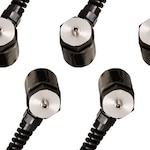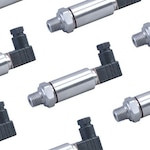USB Load Cells: Do More with the Measurement Data
While analog load cells are ideal for force measurement applications, they do not provide the opportunity to record the data for further analysis/assessment. Although, it is possible to connect these load cells to a Computer, there are certain steps required to meet this goal.
To make the load cell signals readable by a computer, additional electronics are required. This can include power regulation, signal amplification, digitization, calibration, and digital protocol conversion. As such, the entire exercise of capturing data from these strain gauges becomes expensive.
This is where USB load cells become extremely useful. These types of load cells can be connected to a computer directly via USB. The transducer data can be saved to a computer in a .csv format so that further assessment can be done.USB load cells are often provided with free software that makes data logging and charting the reading easy.
Besides, these load cells do not need an extra power supply as they receive power directly from the computer’s USB port. The simplicity and plug-and-play nature of the USB load cells make them ideal for a range of applications where detailed analysis of the measurement values is essential.
With RS-232 serial ports increasingly becoming obsolete, USB load cells are considered as ideal for most of the force measurement applications. Omega’s Low Profile Compression Load Cells are high-speed USB load cells capable of performing 1000 readings per second with an operating temperature range of -40 to 800C. These load cells come with a free downloadable logging and charting software to help you with recording and charting/graphing the information.
The software also includes .NET APIs and a set of commands for command-line access. Omega’s Low Profile Compression Load Cells are ideal for compressive force measurements with a load-bearing capacity ranging from 50 lbf (23 kgf) to 11,023 lbf (5000 kgf). These load cells get their power directly through the computer’s USB and are built using stainless steel to be able to function accurately even in harsh industrial environments.
- What is a Load Cell?
- Types of Load Cells
- Selecting a Load Cell
- FAQ
- Installing a Load Cell
- How to Wire a Load Cell?
- Troubleshooting
- Amplifiers for Load Cells
- Data Loggers for Load Cells
- Load Cell Meter
- Load Cell Controller
- Signal Conditioners
- Weighing Trucks, Trains, and Aircraft
- Dynamic Load Measurement
- Testing Load Tolerance in Cables
- Critical Component in X-ray Laser


